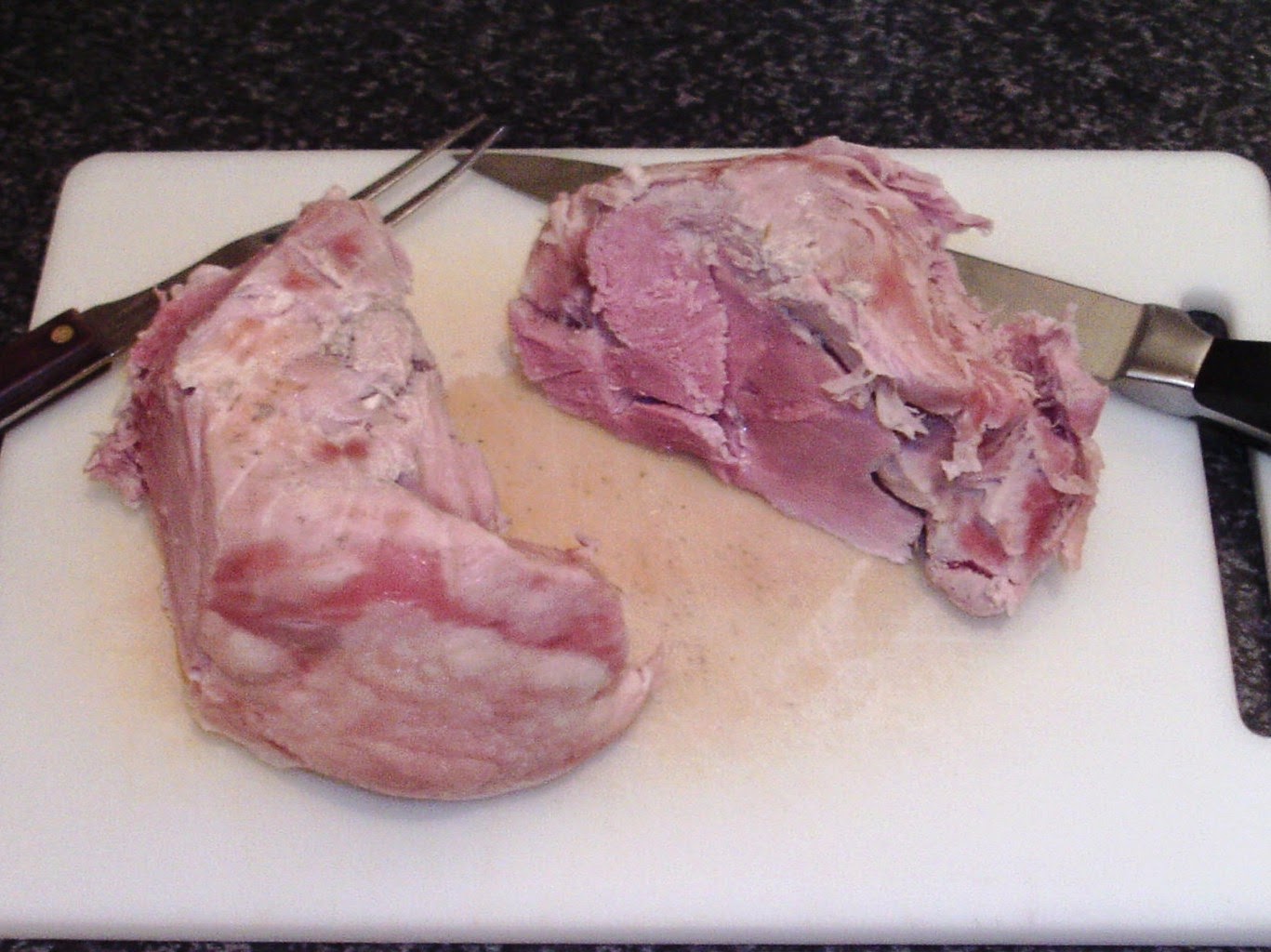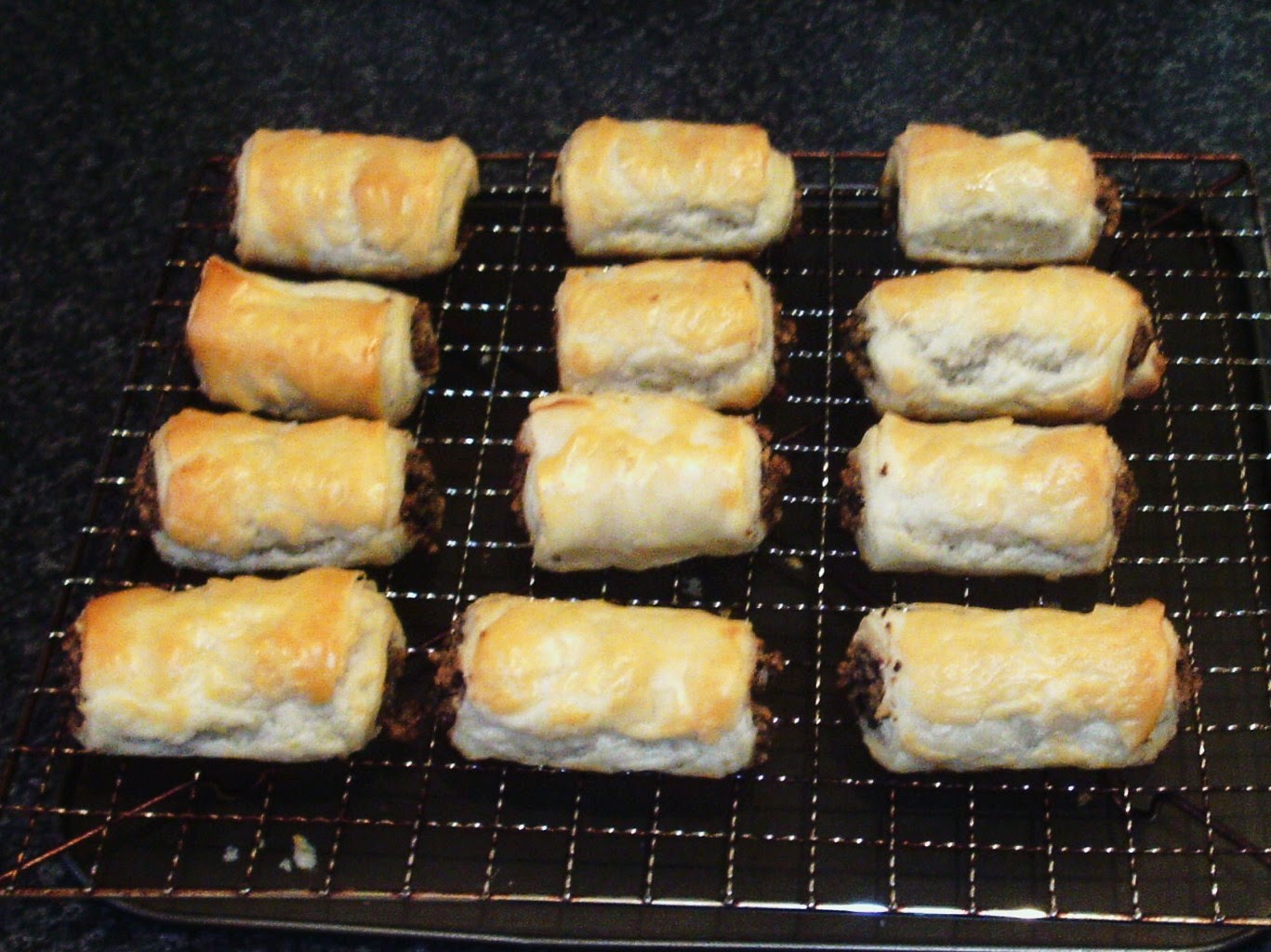A Slightly Modern Twist on a Classic Soup Recipe
 |
| Homemade pea and ham soup |
I remember when I was a wee boy my Gran making a wide range of delicious homemade soups. Although she would sometimes use chicken or even beef as a base, more often than not the soup process would begin with a meaty ham end being boiled up to make stock. The meat from the ham end would ultimately be contained in the finished soup. She would often include dried split peas (soaked overnight) in the soup, as well as potentially a number of other dried pulses and fresh vegetables.
In this soup recipe, I am using frozen peas. This is not simply for convenience but also because frozen peas contain all the locked in freshness of peas straight from their pod. I am also including a couple of not so commonly used vegetables as part of my modern little twist. The results - I promise you - were excellent.
 |
| Large piece of boneless ham |
It was when I came across this bargain piece of boneless ham in my local supermarket that I decided to make this soup. Yes, soup is best made with meat on the bone but the flavours of ham in particular are robust enough that I was confident this idea would work.
 |
| Ham is soaked in water overnight |
It's not absolutely essential but I do steep ham (particularly bonless ham like this) in cold water overnight to get rid of some of the excess salt before I boil/poach it. I feel the risks of the stock proving too salty - even though plenty of bland ingredients are to be added at a later stage - make this effort worthwhile. After all, it is possible to add salt at a later stage in the unlikely event it should be required.
Ingredients (Seves 6 to 8)
4 pound (1.85kg) piece of boneless, unsmoked ham (you will have plenty left over to use for other purposes)
2 sticks of celery
1 medium white onion
1 medium to large carrot
6 whole cloves
Black pepper
Stalk from a head of broccoli
1 medium baking potato
1/2 a medium Swede turnip (rutabaga)
Bag of frozen peas (500g/just over 1 pound)
Stem (white part) only of one medium leek
 |
| Vegetables for basic ham stock |
Directions
Take the piece of ham from its poaching water, weigh it and place it in a large soup pot. Wash and roughly chop the carrot and celery sticks, peel and quarter the onion and add them all to the pot with the ham.
 |
| Ham, vegetables and seasonings are added to soup pot |
Add the cloves and season with some black pepper. Pour in about four or five pints of cold water, ensuring the ham is fully covered.
 |
| Ham and vegetables are simmered to make stock |
Bring the water to a gentle simmer and continue to simmer for twenty-five minutes per pound (450g) of the ham's weight, plus an extra twenty-five minutes.
 |
| Boiled ham is left to cool slightly |
Carefully lift the ham from the water using two carving forks and sit it in a deep plate to cool slightly.
 |
| Tasting slice cut from boiled ham |
It is of course essential to slice off a small piece to taste...
 |
| Straining partly cooled ham stock |
Cover the stock and leave it for about an hour to partly cool before straining through a fine sieve suspended over a large bowl.
 |
| Strained ham stock |
Discard the vegetable pieces and set the stock aside until required.
 |
| Broccoli florets cut from stalk |
A broccoli stalk may seem like an unusual inclusion in any recipe. However, when we buy broccoli heads, we usually cut off the florets and use them while the stock is discarded. That is a lot of unnecessary waste over a long period of time. As I was cooking broccoli later that night, I decided to use the stalk in my soup.
 |
| Potato, Swede turnip and broccoli stalk |
I chopped up the broccoli stalk in to roughly one inch pieces before peeling and similarly chopping the potato and turnip half.
 |
| Bag of frozen peas |
The ham stock was poured back in to the (washed) soup pot and the brocooli stalk, potato and turnip were added. This combination was brought a simmer for twenty minutes before half the frozen peas were added for another three or four minutes' simmering.
 |
| Vegetables and peas are simmered in stock to make soup base |
Turn off the heat and leave the combination to cool for at least half an hour. This is simply a safety precaution as blending liquids that are too hot can cause all sorts of problems.
 |
| Soup base is blended until smooth |
Blend what will become the soup base in stages, adding each blended amount to a large bowl as you work. When complete, return the full amount to the soup pot.
 |
| Bleneded pea and ham soup base |
The leek stem should be washed. Cut off the root end of the stem and discard before slicing in to approximately quarter inch discs.
 |
| Medium leek stem for soup |
Add the leek to the soup base and bring to a simmer for about fifteen minutes.
 |
| Sliced leek is simmered in soup base |
I cut around a third of the ham off to incoporate in the soup but I found even this was too much and some of it was hastily incoporated in a sandwich with English mustard. A quarter of this piece (around a pound) is plenty.
 |
| Wedge is cut from cooled ham for including in soup |
I used my hands to tear the ham in to bite sized chunks but you can pull/chop it as small as you wish.
 |
| Ham for soup is pulled by hand in to rough chunks |
The rest of the ham was sliced and refrigerated to be later used in both a main meal and some sandwiches.
 |
| Remaining ham is sliced and refrigerated for later use |
Add the shredded ham and the remaining frozen peas to the soup. Simmer for three or four minutes to ensure everything is heated through and your delicious soup is ready to serve.
 |
| Remaining peas and ham are last to be added to soup |










































